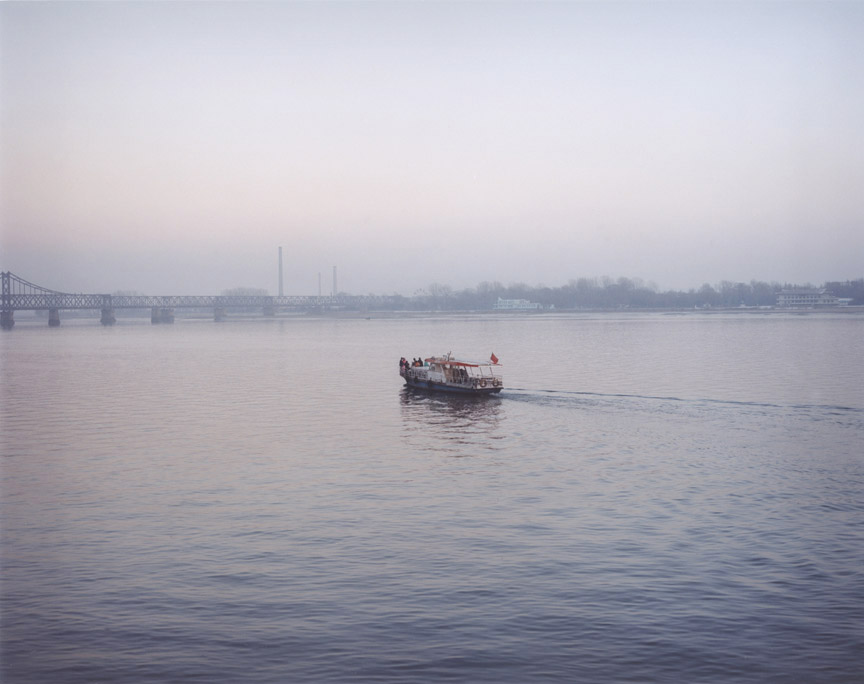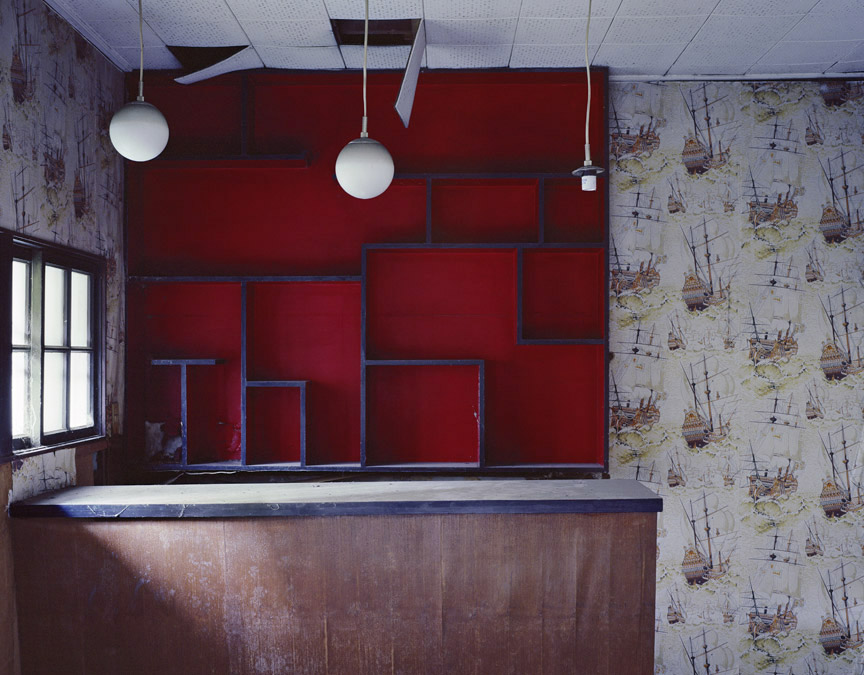Shows
Tomoko Yoneda’s “Japanese House”


Tomoko Yoneda evokes the unsettled spirits of the past in photographs of seemingly insignificant locations. In past works, a picturesque photo of a river has been given the title, Wedding – View of the Wedding Party on the River that Divides North Korea and China, Dandong, China (2007). In another, an urban scene with a boy and tank is titled Birthday Treat, Londonderry (at Site of Bloody Sunday Incident), Northern Ireland (2007). While at first glance her photographs may appear nondescript or empty, the lengthy titles provide historical and political context, tapping into feelings that linger after traumatic or world-changing events, offering a concentrated moment of reflection.
“Japanese House” was recently held at ShugoArts in Tokyo, featuring 11 of the 12 photographs Yoneda first produced for the 2010 Kuandu Biennale, Taiwan, co-curated by Mami Kataoka. For her commission, the artist photographed some of the buildings built during the period of Japanese occupation (1895-1945) that remain in Taiwan.
Taiwan was Japan’s longest-held colony, from 1895-1945, years which mark the beginning and end of its imperial expansion. Japanese influence on the island was pervasive, and by 1940 colonial laws dictated a thorough assimilation of the Taiwanese population into the Japanese nation. The adoption of the Japanese language, names, clothing, and the Shinto religion were all actively promoted. This also included the construction of Japanese-style housing, mapping the urban “metropole” onto its colonies.
In this series of photographs Yoneda focuses on the Japanese features of houses in present-day Taiwan, including shoji screens, tatami mats and tokonoma alcoves—an architectural nook typical of Japanese homes, for the display of aesthetic objects such as a vase of flowers and a hanging scroll painting. The characteristic grid-like structure of Japanese architecture reoccurs throughout the series; dark wooden beams, shelving, screens, windows and doorframes are frequently pictured.


As well as focusing on the architecture’s origins, Yoneda's series emphasizes the way these houses have been altered since the Japanese occupation ended. Curtains, carpets, wall lights and wallpaper—additions not seen in traditional Japanese-style rooms—are often pictured. Former Residence of the Daughter of Japanese Prime Minister, Kentaro Suzuki who Accepted the Potsdam Declaration and Full Surrender to the Allied Powers Ending the Second World War, Qingtian Street, I (2010) depicts a dusty Japanese room with Chinese patterns on the curtains. Its title offers a biography of the original inhabitants and their historical role before the postwar Chinese Nationalist takeover.
One of the walls in Former House of General Wang Shu-ming, the Chief of Staff under Chiang Kai-Shek, Cidong Street, I (2010) has been painted a deep red. The detailed title subtly suggests how later, local residents may have altered the home’s original color to make it more “Chinese.” In the second image of this same house, recent additions such as Western pop music posters have been stuck onto the walls of the tokonoma, reflecting further influences and historical forces in the island’s years of industrial and economic development. However, Yoneda's images often show how the traces of Japan's occupying presence, while hidden amongst architectural layers, linger on in a thick palimpsest.

The occupation of Taiwan and other East Asian countries during World War II is a history Japan is yet to adequately acknowledge. Atrocities committed by its imperial army remain sensitive topics, seldom mentioned in domestic media, so as to not rouse either local right-wing groups or still disgruntled neighbors, namely in China and Korea. Authorized Japanese history textbooks for secondary schools tend to glean the bare details of the country’s military excursions into Southeast Asia, so most young people graduate with little awareness of their nation’s very direct influence on the region’s modern history—typically seen as a confrontation with specifically Western colonialism.
In this respect, though “Japanese House” was commissioned for a Taiwanese exhibition, it is a significant event to see these art works in a Tokyo gallery. In the controversial 2008 exhibition, “Into the Atomic Sunshine: Post-War Art under Japanese Peace Constitution Article 9,” curated by Shinya Watanabe, and eventually held in Japan at Tokyo’s Daikanyama Hillside Forum, Yutaka Matsuzawa exhibited a series of photographs of Japanese torii gates remaining in Taiwan from Shinto shrines built there (and indeed elsewhere throughout the empire) during the colonial period.
However, Yoneda's treatment of architecture as artifact evokes a perhaps more compelling visual connection between Japanese viewers and this former colony. Rather than a depiction of the monumental, as in Matsuzawa’s series, these houses are a part of everyday domestic life for their Taiwanese residents, who live among these colonial reminders, while contending with the still tense relationship with the mainland. This seems far removed from the everyday reality of contemporary Japan, yet as we see here, unresolved histories can continue to affect national and international relations even when their physical sites have been worn away by the years.







